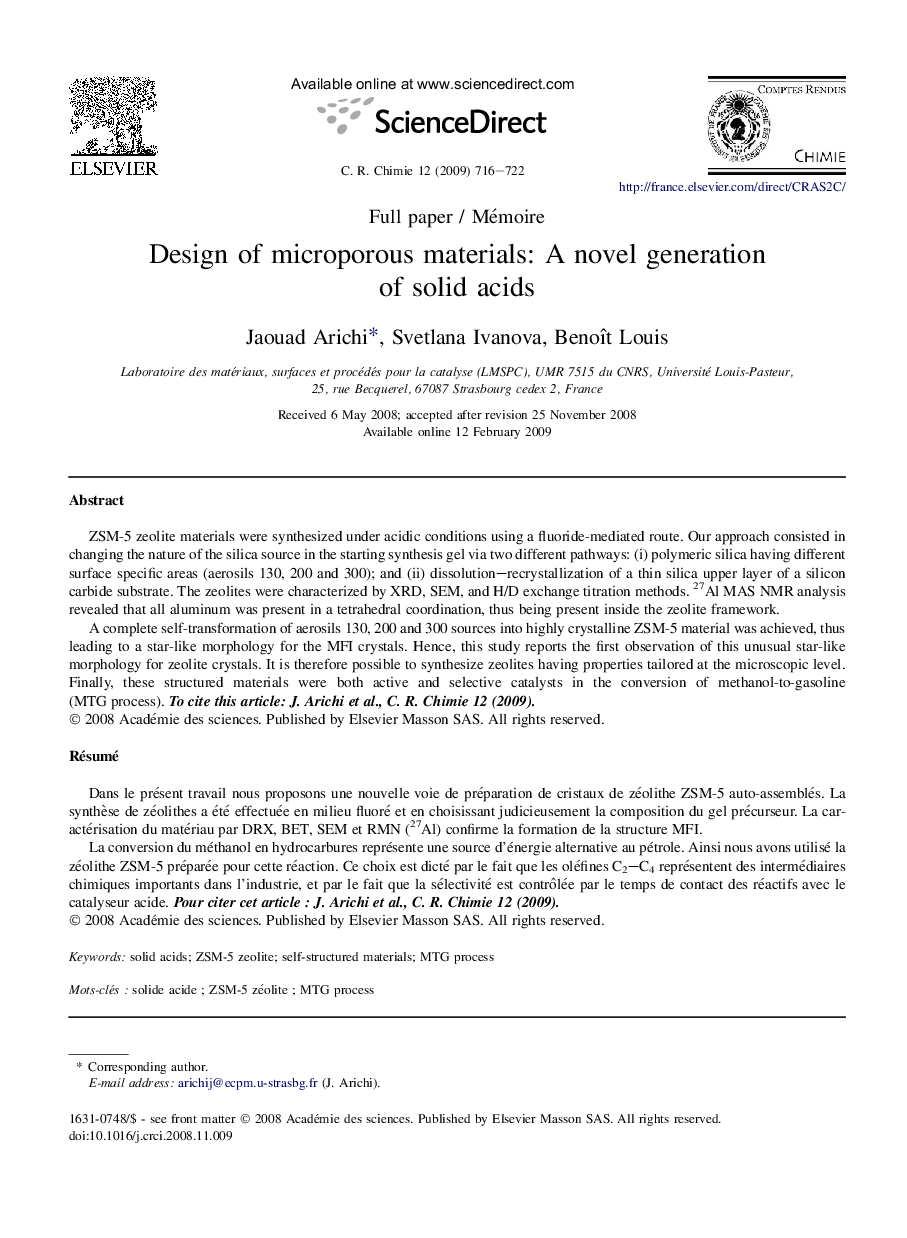| کد مقاله | کد نشریه | سال انتشار | مقاله انگلیسی | نسخه تمام متن |
|---|---|---|---|---|
| 171536 | 458465 | 2009 | 7 صفحه PDF | دانلود رایگان |

ZSM-5 zeolite materials were synthesized under acidic conditions using a fluoride-mediated route. Our approach consisted in changing the nature of the silica source in the starting synthesis gel via two different pathways: (i) polymeric silica having different surface specific areas (aerosils 130, 200 and 300); and (ii) dissolution–recrystallization of a thin silica upper layer of a silicon carbide substrate. The zeolites were characterized by XRD, SEM, and H/D exchange titration methods. 27Al MAS NMR analysis revealed that all aluminum was present in a tetrahedral coordination, thus being present inside the zeolite framework.A complete self-transformation of aerosils 130, 200 and 300 sources into highly crystalline ZSM-5 material was achieved, thus leading to a star-like morphology for the MFI crystals. Hence, this study reports the first observation of this unusual star-like morphology for zeolite crystals. It is therefore possible to synthesize zeolites having properties tailored at the microscopic level. Finally, these structured materials were both active and selective catalysts in the conversion of methanol-to-gasoline (MTG process).
RésuméDans le présent travail nous proposons une nouvelle voie de préparation de cristaux de zéolithe ZSM-5 auto-assemblés. La synthèse de zéolithes a été effectuée en milieu fluoré et en choisissant judicieusement la composition du gel précurseur. La caractérisation du matériau par DRX, BET, SEM et RMN (27Al) confirme la formation de la structure MFI.La conversion du méthanol en hydrocarbures représente une source d'énergie alternative au pétrole. Ainsi nous avons utilisé la zéolithe ZSM-5 préparée pour cette réaction. Ce choix est dicté par le fait que les oléfines C2–C4 représentent des intermédiaires chimiques importants dans l'industrie, et par le fait que la sélectivité est contrôlée par le temps de contact des réactifs avec le catalyseur acide.
Journal: Comptes Rendus Chimie - Volume 12, Issues 6–7, June–July 2009, Pages 716–722